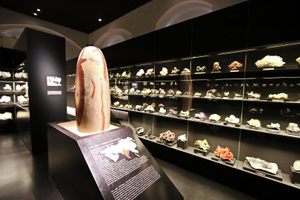About
Organized like the old curio cabinets of the 19th century, the Manuel M. Villada Museum of Natural History at the Universidad Autónoma del Estado de México houses a trove of curiosities in its collection. But of all the intriguing items at the museum, the mummies are the most peculiar. Several experts have tried to find out the origin of these curiosities, which are surrounded by legend.
The first mummy on display is María Reyna, the wife of the bandit Chepe Pesos Duros who raided the area of Almoloya in the 19th century. At that time, an epidemic of dysentery had arrived in the city. According to the story, Maria and her entire family died of the disease, and when they were buried they were lime plated to avoid further infections. This is how, over time, they became mummified and were sent to the university.
The mummy with the most unusual story is probably Father Botello. According to legend, he was a man who officiated religious services to earn money without actually being a priest. He was addicted to alcohol and once, while drunk inside a canteen, revealed that he was a fake priest—a confession that unsurprisingly angered the population.
"Father" Botello was taken to San Antonio Acahualco where a popular trial was held, finding him guilty of false sacraments and sexual abuse of women in the confessionals of the churches. For these crimes, he was hanged publicly. Later his body was buried with lime in the San Diego Temple where his mummy was later discovered. According to one expert, the tongue outside the mummy and the rope mark on the neck proved the veracity of the story.
Although the museum is small, it abounds in curiosities. Some of the taxidermy animals are more than 100 years old. If you visit the museum, do not lose sight of the collection of Japanese marine fauna conserved in tiny flasks with formaldehyde, its fossil dinosaur eggs, and an ancient shrunken head.
Related Tags
Know Before You Go
The museum is located through the lefthand door of the main entrance of the Instituto Literario rectory building at the Universidad Autónoma del Estado de México. Open daily from 10 a.m. to 6 p.m. Entrance is free.
Community Contributors
Added By
Published
June 25, 2019




























